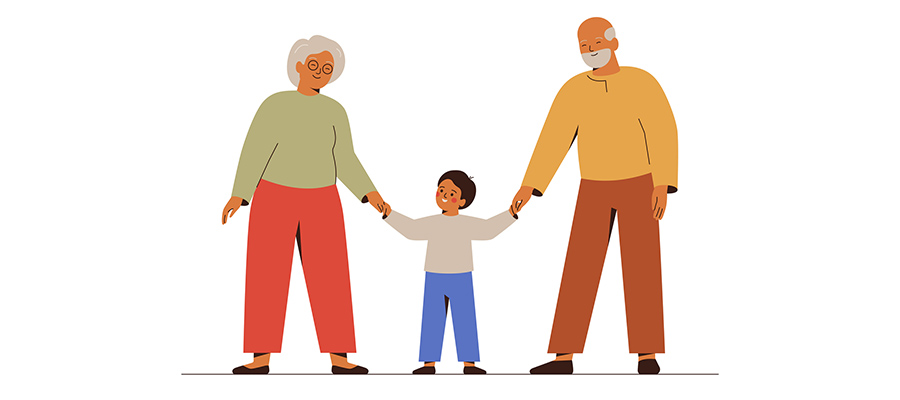Understanding the experiences of children growing up in kinship care in Scotland


An abridged version of this blog post was originally published by the Scottish Centre for Administrative Data Research (SCADR).
What is kinship care, and why is this research important?
When a child or young person is unable to be cared for by their family for any reason, they may come into the care of their local authority. They may be cared for by foster carers, in residential homes, or at home with their parents with support and supervision provided by their local authority. In recent years, however, and in line with government policy and guidance in Scotland, there has been a rapidly increasing proportion of children and young people in need of care and protection who are being cared for by close friends or extended family, such as a grandparent, or aunt or uncle. This is known as formal kinship care. The most recent data for 2022 shows that in Scotland more than 1 in 3 children in care (34%) are living with kinship carers, up from just 13% in 2006.
As the proportion of children living in kinship care grows, it is important that there is a better understanding of their experiences so that the support both they and their carers may need can be identified and provided.
What have we found out so far?
This study, funded by the Economic and Social Research Council, is being conducted by CELCIS in partnership with the Scottish Centre for Administrative Data Research (SCADR). The study is using anonymised data gathered by local authorities on all children who were in kinship care in Scotland between 2008 and 2019. The information collected includes the dates that a child or young person was in care, the types of environments that they lived in, and where they moved to after leaving care. Where possible, this information has been linked to the anonymised information available for the same children from their education and health records.
Our initial analysis has centred solely on these children and young people’s experiences of care, and early findings have shown that there is substantial regional variation across Scotland’s different local authority areas in the proportion of children and young people living in kinship care, ranging from fewer than 20% to more than 50% of all children in care. There is also evidence of a higher percentage of children and young people living in kinship care in areas of high deprivation.
The research has found that an increasing proportion of children are now cared for by kinship carers under voluntary care arrangements where their parents agree for their child to be cared for by a family member or friend with the support of their local authority, as opposed to compulsory measures such as a Compulsory Supervision Order or Child Protection Order being used. The proportion of children in kinship care under voluntary care arrangements has risen from 19% in 2009 to 40% in 2019, and voluntary arrangements were more commonly used for kinship care than for other living arrangements for children in care.
We see in our analysis that the average length of time a child or young person spent being cared for by kinship carers was around 16 months, however, this again varied greatly across different areas of Scotland. For example, the average amount of time a child or young person was cared for in kinship care ranged from five months to 36 months across different local authorities. We also see that children who were cared for by kinship carers under compulsory measures tended to spend longer with these carers than the children and young people whose parents had agreed to kinship care under a voluntary arrangement.
For most children who have been cared for by kinship carers (66%), this was the first living arrangement organised by the local authority when their care and protection needs were identified. When a child didn’t initially move into kinship care, they were most likely to have spent time being ‘looked after at home’ prior to moving in with kinship carers (53%) or have spent a period of time with foster carers (38%). Additionally, 40% of children who have been cared for by kinship carers have only ever experienced this type of care.
What’s next?
The next stage of our research intends to make use of the linked education and health data that is available for children and young people who have spent time living with kinship carers. This will provide a more complete picture of their experiences and outcomes beyond care, and will help those responsible for their care and support to better understand what might be needed to ensure that all children are able to get the right help when they need it and thrive. The full findings of our research will be published on the Growing Up In Kinship Care project page and are expected this summer (2024).
Find out more about the project
The views expressed in this blog post are those of the author/s and may not represent the views or opinions of our funders.
Commenting on the blog posts: sharing comments and perspectives prompted by the posts on this blog are welcome.
CELCIS operates a moderation process so your comment will not go live straight away.


